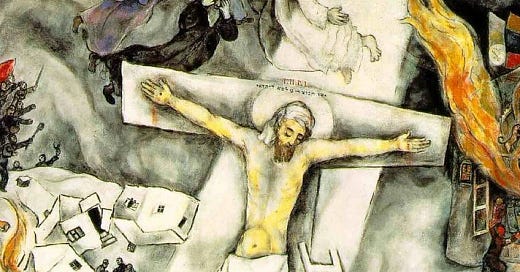On the surface, Leviticus 1-7 looks like a set of legal texts or ritual texts. Irene Feldman argued, in her 2020 monograph, The Story of Sacrifice, that it’s a narrative. Here are some of the Bible observations she identifies as clues:
If you’re serious, open your Bible and follow along:
In Exodus 40:1, Yahweh speaks to Moses for the first time since Sinai (Exod 25-31). In vv. 2-15, Yahweh repeats most of the instructions He’d given in ch. 25-31. At v. 16, we read, “Moses did everything just as the Lord had commanded him.” This is a forward-looking statement, because it’s in the next verse, v. 17, that he starts doing the everything.
In vv. 17-33a, Moses does the work. But notice, everything Moses builds, he also puts to use, which Yahweh hadn’t commanded. He set up the tabernacle, and he covered it. He set up the table, and he put brad on it. He set up the golden altar, and offered incense on it. He set up the bronze altar, and he offered a whole burnt offering on it. He set up the water basin, filled it, and washed his hands and feet.
When Moses makes his offering, he offers (‘olah) it, he doesn’t bring (qorab) it. When Leviticus starts, the main verb for offer is qorab.
In v. 33b, Moses finishes the work (mal’kah). This word for ‘work’ refers to physical, constructive work throughout Exodus. In Lev. 1:1 and following, the word for ‘work’ changes to ‘abadah, which means ritual work, and which is reserved for priests. The key shift in Lev. 1:1 is the shift from constructive work to ritual work. In fact, Lev. 1:1a has no subject. A wooden translation would be, “And he called to Moses, and Yahweh spoke to him from the Meeting Tent, saying…”. The “he” at Lev. 1:1 may be the cloud, or the glory of the Lord (Exod. 40:34-40).
Lev. 1:1 is a continuation of Yahweh’s speech to Moses, marked by the conclusion of his constructive labor, and anticipative of a new need for ritual labor.
In Leviticus 1-5, Yahweh continues to speak to Moses, but this time, there is a secondary audience: Moses is to tell these things to Israel. In Leviticus 6-7, the secondary audience changes: Moses is to tell these things to Aaron and his (four) sons. From a narrative analysis perspective, it’s noteworthy that the information presented in 1-5, 6-7 is for different audiences, yet made “overhearable” by all readers or listeners. This knowledge is both specialized and democratized.
These chapters, which are an extended speech from Yahweh to Moses within the same conversation event that started in Exodus 40:1, and which are the first explanation of sacrifice in the Bible, are followed by another narrative portion, Leviticus 8-10:7, which narrate the “doing” of the work of ordination that Yahweh had told Moses to do in 40:9-15, but which hadn’t yet gotten done.
The disobedience narrative in 10:3 gets Yahweh talking again, which He does nearly all the way through Numbers 6. The story doesn’t really continue until Numbers 7:1-2, which includes both a summary of Moses’s work, and the response of the people to all Moses must have relayed to them about what God told him back in Lev. 1-7. Look at those two elements:
On the day when Moses had finished setting up the tabernacle and had anointed and consecrated it with all its furnishings and had anointed and consecrated the altar with all its utensils…
the leaders of Israel, heads of their ancestral houses, the leaders of the tribes, who were over those who were enrolled, made offerings.
Numbers 7 tells the story of all those leaders, those heads, making their offerings, along the lines set out in Lev 1.
Numbers 8 tells the story of Moses and Aaron separating out Levites to be designated for the ritual work described in Lev 1-7.
Numbers 9 tells the story of Moses and Aaron doing Passover, pursuant to the instructions in Lev 23.
Numbers 10 shows them getting trumpets and heading out. End scene.
What’s the point?
When you open your Bible to Leviticus 1 and read seven straight chapters of ritual regulations, you’re best served by turning back to Exodus 40 and reading these regulations as a set of instructions that are semi-followed (and semi-deviated from!) in the other scenes of this story (e.g. Lev 8-10; Num. 7-9). There’s meaning in the deviations.
The shift from Exod 40-Lev 1 is a shift toward focus on the regular, ritual work which corresponds to the new-built sacred structure. New work to do; new priesthood ordained to do it.



